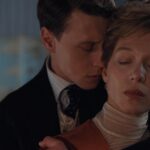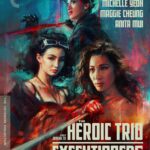Hidden Figures: Tightrope, by David Bax
Theodore Melfi’s Hidden Figures is a deceptively quaint-seeming period piece that initially threatens to be a palatable bowdlerization of history. Eventually, though, as the characters becomes people and not archetypes, we come to see this for the sly storytelling trick that it is. This movie has plenty to say and it’s wisely disarmed its audience so that its voice may fall on as many willing ears as possible.
Hidden Figures is the true story of three of the black, female mathematicians who worked at NASA in the 1960s and made essential contributions to the space race (this would make for an excellent double feature with The Right Stuff). All three are portrayed by strong performers. There is physicist Katherine Johnson (Taraji P. Henson), mathematician and eventual supervisor Dorothy Vaughan (Octavia Spencer) and aerospace engineer Mary Jackson (Janelle Monáe).
With accomplished contributions from Australian cinematographer Mandy Walker and production designer Wynn Thomas, Melfi achieves a geographic yet organically cluttered mise-en-scène. Hard angles comingle with rich, warm colors across the scope frame in a manner that’s immediate pleasing to the eye. It’s an ingratiating approach to the material that’s really a Trojan horse for the harsh but nuanced truths to come.
It’s no secret that the 1960s where an even harder time to be black in American than our current day (even with the nation’s most virulent racists now emboldened by the election of their candidate by a minority of voters). Between Hidden Figures and Jeff Nichols’ Loving, 1960s Virginia is especially taking it on the chin this year. But Melfi and co-screenwriter Allison Schroeder (adapting Margot Lee Shetterly’s book) don’t foreground the most ghastly displays of racism. They’re present, of course, but they thrum constantly in the background, the din of whites protesting desegregation in schools. Instead, Hidden Figures focuses on the constant horrors and indignities of more subtle but insidious institutionalized forms of racism. Johnson gets castigated for taking breaks that are too long because it simply hasn’t occurred to her white boss (Kevin Costner) that she needs to go to the other side of the campus to find a “colored” restroom. Vaughan earns less than white women who do similar work but her supervisor (Kirsten Dunst) always has a list of bureaucratic excuses for why this is, even though both women know the real reason. The only thing keeping Jackson from a promotion is a certification that she can’t get because she’s not allowed to attend the classes. These days, when we hear people talking about making America great again, these are the days to which they are proposing a return.
Hidden Figures understands that the best way to make America great is to allow as many Americans as possible their shot at greatness. Sadly but stirringly, as we see here, they’re going to have to fight for their chances, which won’t be given to them easily by the entrenched powers. The filmmakers could not have predicted just how relevant these messages would be but we now live in a country where a majority of voters have been undermined. Thus it’s enraging and relatable when someone at NASA says, “How the hell did we come in second in a two-man race?” And he’s talking about Russia, no less, who would appear to have bested American progress once again in 2016.
Writing this, I am furious. But it’s to Melfi and company’s credit that they remain optimistic, even pleasant. On the surface, Hidden Figures sometimes appears to be conventional and formulaic, attributes to which I usually react unfavorably. But when you have something important to say, it’s wise and mature to do so in a way to which the most people will be receptive.




























